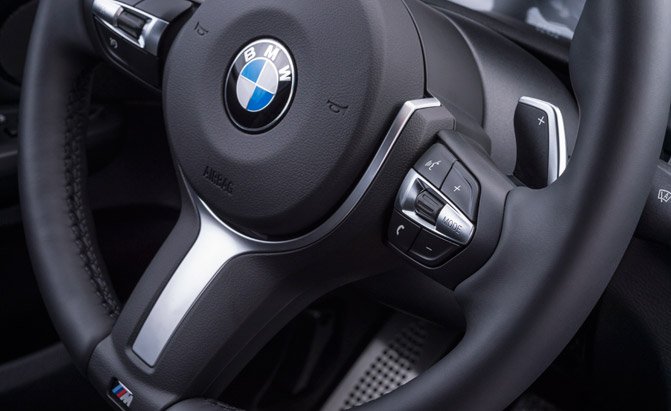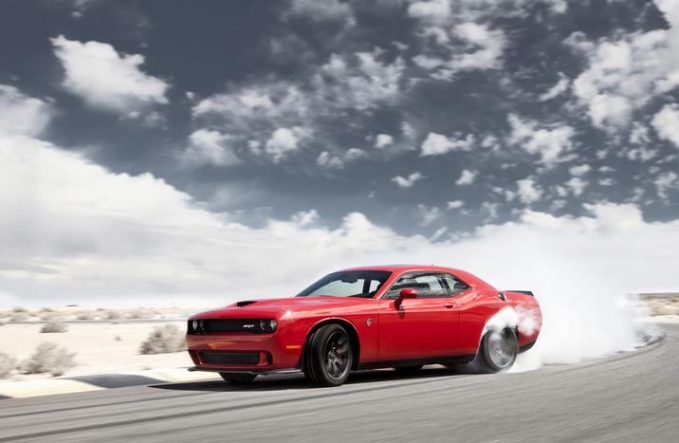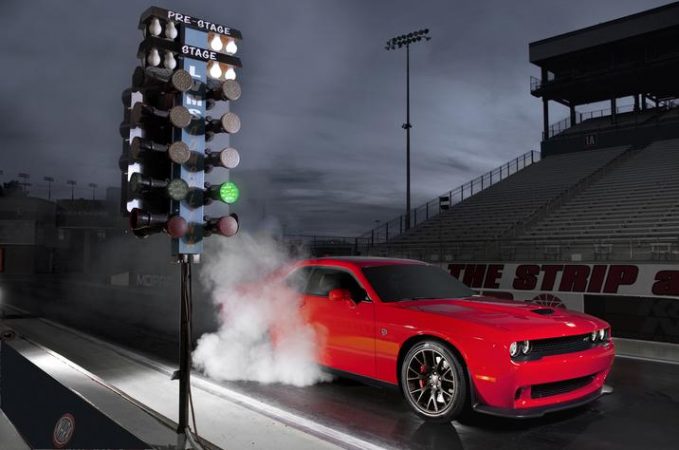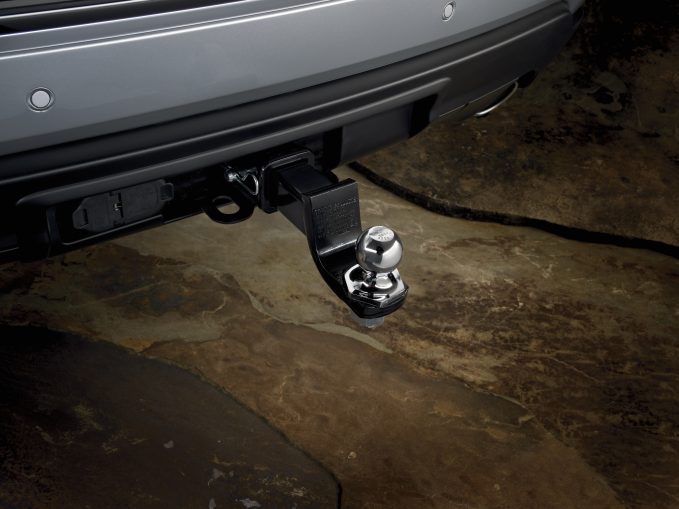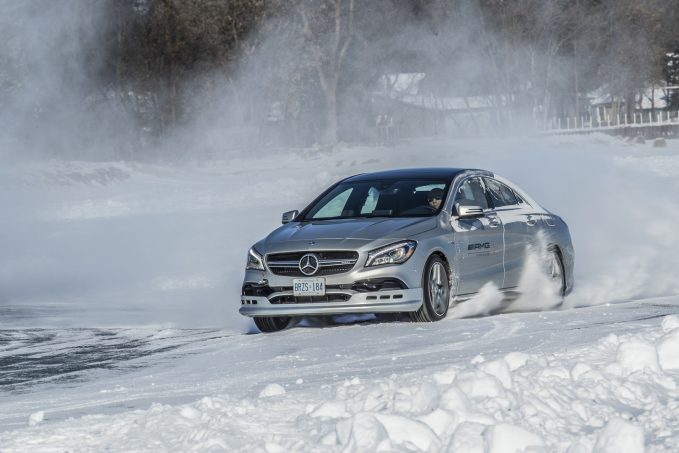Paddle shifters used to be found exclusively in high-performance sports cars, but these days, they’re featured regular cars like the new Ford Escape and even the Honda Odyssey minivan.
But don’t people buy automatic cars because they don’t want to shift their own gears? Why do so many automatic cars these days have paddle shifters, even if they’re not sporty cars? When and why should you use paddle shifters in an automatic car?
“There’s always cases where someone will want the paddle shifters,” said Erich Heuschle, an engineer at Fiat Chrysler Automobiles. Heuschle works on FCA’s high-performance SRT brand, the folks responsible for cars like the 707-horsepower Dodge Challenger SRT Hellcat. He also is one member of an elite group of FCA engineers who are approved to test vehicles at their handling limit, which is to say he’s allowed to thrash development cars until they disintegrate or meet his high standards.
“The paddle shifters are more about fun and engagement, rather than function because the [automatic] transmission shift logic is so good,” he said. “We put so much effort into making the automatic behave well.”
In most cars, paddle shifters are used to change a gear a step up or down. Typically, the paddle on the right side of the wheel is an upshift, and the paddle on the left is a downshift. Automatic cars can have other ways to manually change gears, too, like using a switch on the gear selector or by moving the gear selector into a manual mode and toggling it up or down.
“You can use the paddle shifters and along with the track mode, the car will stay on the rev limiter,” explained Heuschle, adding that performance might be the most popular reason to use paddle shifters. It’s also worth mentioning that he has a strong racing background and is well-accustomed to using paddle shifters, which is probably why the first application he suggests for using paddle shifters is for the race track.
He explains that when put in the track mode, the eight-speed ZF automatic transmission found in the Challenger SRT Hellcat is able to bang out shifts in just 160 milliseconds, which is plenty quick, and can even rival some dual-clutch transmission equipped vehicles (which are often cited as being the fastest shifting vehicles around). For reference, the Bugatti Veyron can apparently shift in 8 ms while the Nissan GTR does it in 150 ms.
But fun and games aren’t the only cases for using the paddle shifters. In fact, Heuschle explained that much of the performance statistics that SRT cites in their releases are done with the vehicle in an automatic mode.
“I want the the paddle shifters to be redundant,” he said, explaining that manually shifting these kinds of performance cars may not be the fastest driving style. “And at the tracks we test at, it is redundant. But then again, not all tracks are like our test tracks, and as a result, we also have the paddle shifters for drivers who need that control.”
He also explained that at the drag strip, where the SRT Hellcat is king, it’s the automatic model being shifted in an automatic mode that is the fastest method to the checkered line. The Hellcat manages a zero-to-60-mph sprint in the mid-3 second range with that transmission, and a National Hot Rod Association (NHRA) certified quarter-mile time of 11.2 seconds with street tires or 10.8 seconds on drag radial tires. “The Hellcat hit those NHRA-certified times with an auto [and] with it shifting itself,” said Heuschle.
Moving beyond track and performance driving, Heuschle explained the more practical uses for paddle shifters. Trucks Expert Stephen Elmer echos Heuschle’s comments. “While towing, this is especially helpful when descending down long grades where you may want the engine/transmission to help control weight,” said Elmer. “By using the paddle shifters, you can have the truck downshift to keep the load controlled, all without having your hands leave the wheel.”
When towing with SUVs or crossovers equipped paddle shifters, for example, the Jeep Grand Cherokee or Subaru Outback, users can use the paddle shifters to quickly change gears when approaching a hill, to maintain solid acceleration. The opposite is also true: they can manually engine brake the vehicle when descending a hill or approaching traffic. Transmissions can’t see hills like the driver can, so changing gear in anticipation of a ascent or descent will allow for a smoother drive.
Heuschle explains that doing so won’t damage the transmission.
“We are prepared for customers to use those paddles,“ he said. “The transmission won’t allow you to downshift where you’re going to over-rev the engine.”
He added that SRT and ZF conduct a lot of testing to ensure the transmissions can handle the rigors of hard, daily usage. “The durability testers go through the paddles and make sure we’re getting all the use cases for shifts and durability. Not only that but ZF also tests the durability of these transmissions and the system.” He explains what must be a very enjoyable task of testing those performance cars transmissions. “ We do 50 passes down the strip with the stickiest stock tires and then 50 with drag radials, both sets in track mode shifting as aggressively as it can.” Let us know if you need a helping hand there, Heuschle!
One final use case that he points out for when to use paddle shifters is in the snow. Most automatics will allow the car to start off in second gear, rather than first, which will limit the amount of torque sent to the drive wheels, and also help to prevent wheelspin or a loss of traction in the snow.
Most cars may have a snow mode that automatically does the same thing, but the paddle shifters will help put that control in the driver’s hands. In Heuschle’s words, the paddles are “for when you want to be in control. We spend a lot of effort where putting it in auto mode is the best use scenario. But there are so many situations that we aren’t or can’t test for.“
And those situations are usually just about driver preference. So if you’re unsatisfied with the transmission do it’s own thing, don’t be afraid to pull a paddle and take control for yourself.







